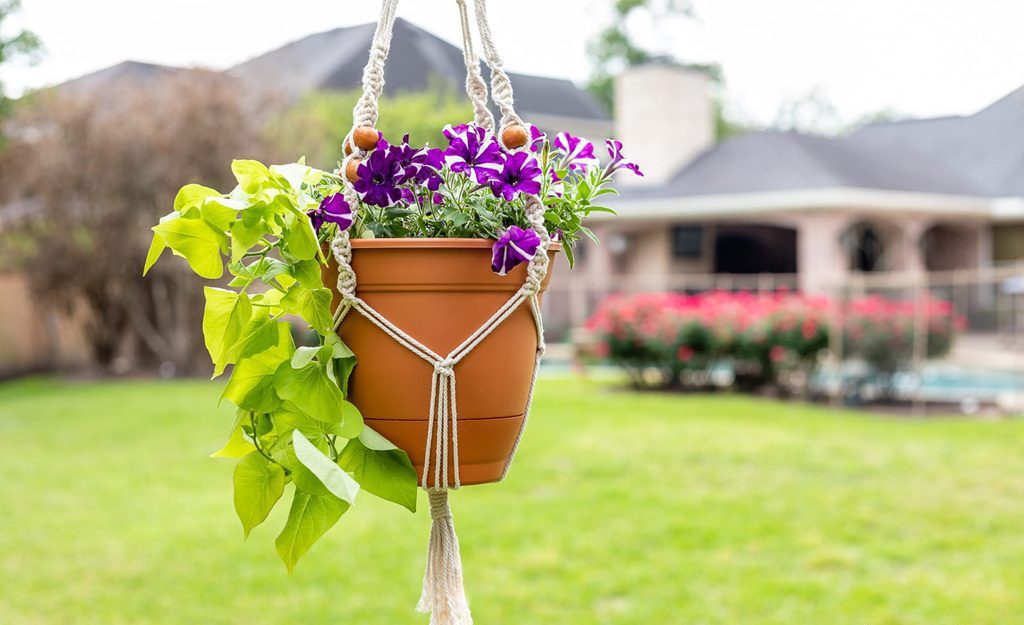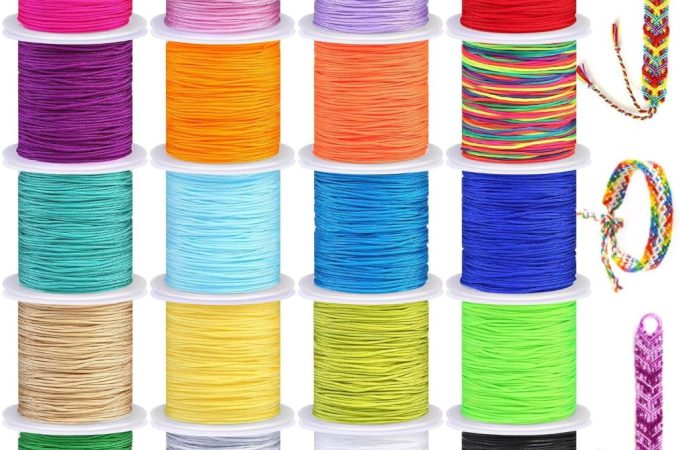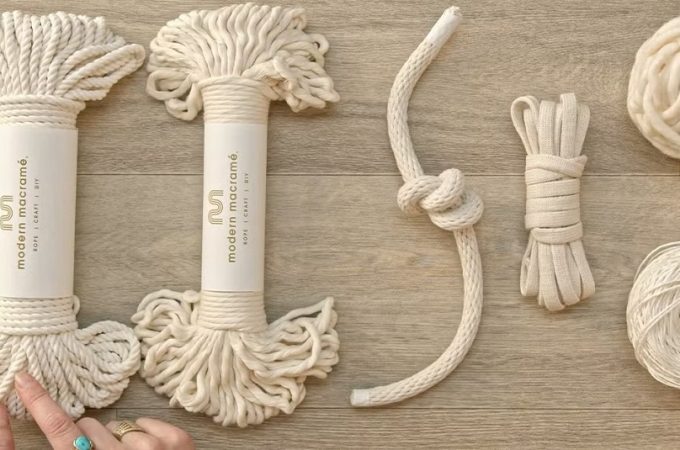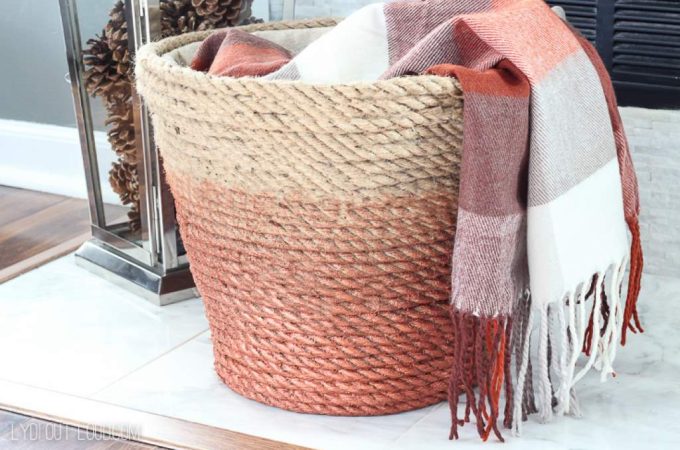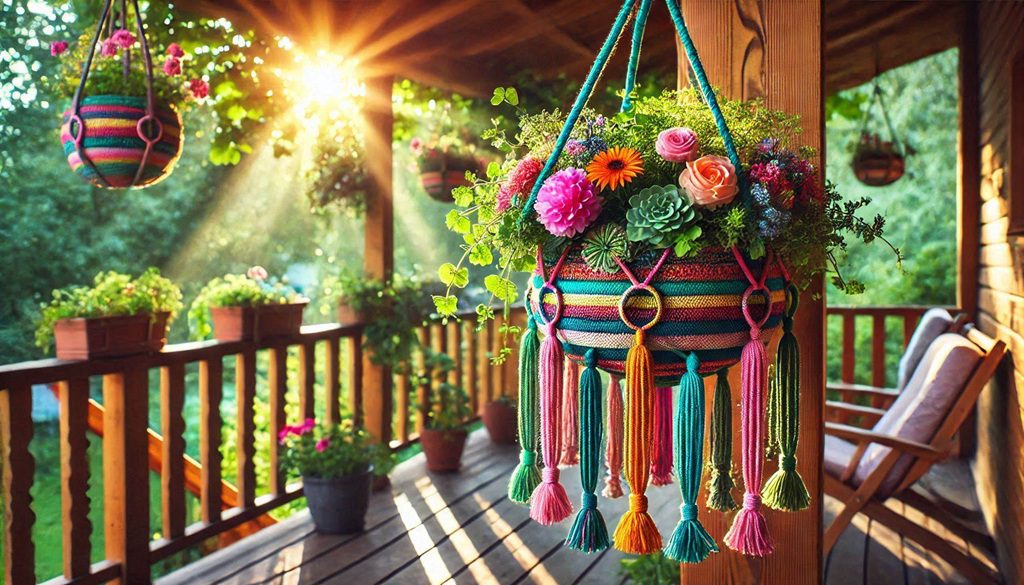
Elevate Your Garden: A Comprehensive Guide to DIY Hanging Basket Rope
Hanging baskets add a touch of whimsy and vertical dimension to any garden, patio, or balcony. But why settle for store-bought options when you can create unique, personalized hanging rope baskets that perfectly complement your style? This comprehensive guide dives deep into the world of DIY hanging basket rope, empowering you to craft stunning displays with your own two hands.
Contents at a Glance
ToggleChoosing the Right Rope for Your Hanging Basket
The foundation of any successful hanging basket lies in the rope. But with a plethora of options available, how do you choose the perfect one? Here’s a breakdown of popular materials and their characteristics:
-
Natural Fibers:
- Jute: A robust and affordable choice, jute rope offers a rustic, earthy aesthetic. Its natural brown hue blends seamlessly with greenery, making it a favorite for eco-conscious gardeners. However, jute can be susceptible to rot in consistently damp conditions, so it’s best suited for covered patios or areas with good drainage.
- Sisal: Similar in appearance to jute, sisal rope is slightly more refined and smoother to the touch. It boasts excellent strength and durability, making it suitable for heavier plants. Sisal is also more resistant to moisture than jute.
- Cotton: Soft and pliable, cotton rope offers a comfortable grip for crafting. It’s available in a variety of colors, allowing for greater customization. However, cotton is less durable than jute or sisal and may fray over time, especially with prolonged exposure to the elements.
- Hemp: An eco-friendly and sustainable option, hemp rope is known for its exceptional strength and longevity. It’s naturally resistant to mold, mildew, and UV damage, making it ideal for outdoor use. Hemp rope often has a slightly rough texture, adding a touch of rustic charm to your hanging baskets.
-
Synthetic Fibers:
- Nylon: Incredibly strong and weather-resistant, nylon rope is a popular choice for heavy-duty hanging baskets. It’s lightweight, durable, and won’t rot or mildew. Nylon rope is available in a wide array of colors and thicknesses, offering versatility in design.
- Polyester: Similar to nylon in strength and durability, polyester rope also boasts excellent UV resistance, ensuring its color remains vibrant even with prolonged sun exposure. It’s a low-maintenance option that’s easy to clean and care for.
- Polypropylene: A lightweight and affordable synthetic option, polypropylene rope is resistant to moisture, abrasion, and chemicals. It’s often used for marine applications due to its buoyancy and resistance to saltwater damage. Polypropylene rope is available in various vibrant colors, adding a pop of personality to your hanging baskets.
Pro Tip: When selecting your rope, consider the weight of your chosen planter and plants. Opt for thicker, more durable rope for heavier displays, and ensure it’s rated for the intended load.
Essential Tools for Crafting Your DIY Rope Basket
Before embarking on your rope-crafting journey, gather these essential tools to ensure a smooth and enjoyable experience:
- Sharp Scissors: Essential for clean, precise cuts.
- Measuring Tape: Accurate measurements are crucial for creating symmetrical and balanced designs.
- Rope Clamps or Clips: These handy tools hold the rope securely in place while you work, preventing unraveling and ensuring tight knots.
- Lighter or Matches: (For synthetic ropes) Used to seal the ends of synthetic ropes to prevent fraying.
- Optional: Beads, decorative knots, tassels, or charms to personalize your hanging basket.
Step-by-Step Guide to Creating a Basic Macrame Hanging Basket
Macrame, the art of knotting cord or rope in patterns, offers endless possibilities for creating beautiful hanging baskets. Here’s a beginner-friendly guide to crafting a basic macrame plant hanger:
Materials:
- 4 strands of rope, each approximately 10 feet long (adjust length based on desired hanging height)
- 1 plant pot (with drainage holes)
Instructions:
- Prepare the Rope: Fold all four strands in half and create a loop at the top. Secure the loop with a knot or a metal ring.
- Divide and Conquer: Divide the eight strands into four groups of two.
- Create Square Knots: Take the two outer strands from one group and form a “4” shape. Pass the right strand over the “4” and under the left strand, then bring it up through the loop. Pull tight to form a half-square knot. Repeat the process, this time starting with the left strand, to complete the square knot.
- Repeat and Space: Continue making square knots with each group of two strands. Leave a few inches of space between each knot.
- Gather and Knot: Gather all eight strands together a few inches below the last row of square knots. Tie a secure overhand knot.
- From the Basket: Divide the strands again into four groups of two. Tie a square knot with each group, leaving enough space to accommodate your plant pot.
- Secure the Pot: Place your plant pot in the macrame hanger. Gather all the strands below the pot and tie a final overhand knot to secure it in place.
- Hang and Enjoy: Trim any excess rope and hang your beautiful macrame plant hanger in your desired location.
This basic pattern serves as a foundation for countless variations. Experiment with different knotting techniques, add beads or charms and explore various rope colors and textures to create truly unique and personalized hanging baskets.
Beyond the Basics: Exploring Different Rope Hanging Techniques
While macrame offers a world of creative possibilities, it’s not the only technique for crafting stunning hanging rope baskets. Here are a few other methods to explore:
- Braiding: A classic and versatile technique, braiding can be used to create sturdy and visually appealing hanging basket ropes. Experiment with different braid styles, like the classic three-strand braid, the intricate four-strand braid, or the elegant fishtail braid.
- Knotting: Beyond macrame, numerous knotting techniques can be employed to create unique hanging basket designs. Explore decorative knots like the monkey’s fist, the crown knot, or the Celtic knot to add intricate details and visual interest.
- Coiling: For a simple yet effective approach, try coiling rope around the base of your plant pot. Secure the coils with glue or stitching to create a rustic and charming hanging basket.
- Weaving: Weaving rope around a metal ring or frame can create a sturdy and stylish base for your hanging basket. Experiment with different weaving patterns and materials to achieve diverse looks.
Pro Tip: Don’t be afraid to combine different techniques to create truly unique and personalized designs. Let your creativity flow and experiment with various knots, braids, and weaving patterns to craft hanging baskets that reflect your individual style.
Enhancing Your DIY Hanging Baskets: Tips and Tricks
Once you’ve mastered the basic techniques, consider these additional tips and tricks to elevate your DIY hanging baskets:
- Add a touch of color: Incorporate colorful beads, ribbons, or tassels into your rope designs to create vibrant and eye-catching displays.
- Embrace natural elements: Weave in shells, driftwood, or dried flowers for a touch of rustic charm.
- Play with texture: Combine different rope materials and thicknesses to create textural depth and visual interest.
- Customize the length: Adjust the length of your hanging ropes to create dynamic displays at varying heights.
- Consider the planter: Choose planters that complement your rope designs and the overall aesthetic of your space.
- Prioritize drainage: Ensure your chosen planter has adequate drainage holes to prevent overwatering and root rot.
- Choose the right plants: Select plants that thrive in hanging baskets and complement the style of your rope creations.
By incorporating these tips and tricks, you can transform your DIY hanging baskets into stunning works of art that enhance your indoor or outdoor spaces.
Related: Climbing Rope DIY: A Comprehensive Guide
Reviews: What Others Are Saying About DIY Hanging Basket Rope
The joy of creating DIY hanging baskets extends beyond the crafting process itself.
Here’s what others are saying about their experiences:
- “I was amazed at how easy it was to create my own macrame plant hangers. It’s such a rewarding feeling to display something I made myself.” – Sarah M.
- “Using different types of rope allowed me to create unique hanging baskets that perfectly match my garden’s aesthetic. I love the rustic charm of jute and the vibrant colors of polypropylene.” – David L.
- “DIY hanging baskets make fantastic gifts! My friends and family were thrilled to receive personalized creations that I crafted with love.” – Emily S.
These testimonials highlight the satisfaction and sense of accomplishment that come with crafting your own hanging basket rope. It’s a creative outlet that allows you to personalize your space and connect with nature.
Related: DIY Baseball on a Rope: A Home Run of Fun for All Ages
Frequently Asked Questions (FAQ)
Q: What type of rope is best for outdoor hanging baskets?
A: For outdoor use, prioritize durability and weather resistance. Natural fibers like sisal and hemp offer good strength and a rustic aesthetic, while synthetic options like nylon and polyester provide exceptional longevity and resistance to the elements.
Q: How much rope do I need for a hanging basket?
A: The required rope length depends on the desired hanging height and the complexity of your design. As a general rule, start with at least 10 feet of rope per strand and adjust as needed.
Q: Can I use any type of plant pot for a hanging basket?
A: While you can use various plant pots, prioritize those with drainage holes to prevent overwatering. Consider the pot’s weight and size when selecting your rope and hanging method.
Q: How do I prevent my rope from fraying?
A: For natural fibers, apply a sealant or beeswax to the ends to minimize fraying. For synthetic ropes, carefully melt the ends with a lighter or matches to seal them.
Q: Where can I find inspiration for DIY hanging basket rope designs?
A: Explore online platforms like Pinterest, Instagram, and YouTube for a wealth of inspiration. Craft blogs and DIY websites also offer tutorials and patterns for various hanging basket designs.
Q: How do I care for my DIY hanging rope basket?
A: Regularly inspect your hanging basket for signs of wear and tear. Clean the rope with a damp cloth as needed. For natural fibers, avoid excessive moisture and store indoors during harsh weather conditions.
Conclusion: Unleash Your Creativity and Elevate Your Garden
Crafting DIY hanging basket rope is a rewarding endeavor that allows you to personalize your space, connect with nature, and unleash your creativity. By exploring different rope materials, knotting techniques, and design elements, you can create stunning displays that enhance your indoor or outdoor oasis. Embrace the versatility of rope, experiment with various styles, and let your imagination soar as you transform your garden into a haven of personalized beauty.

